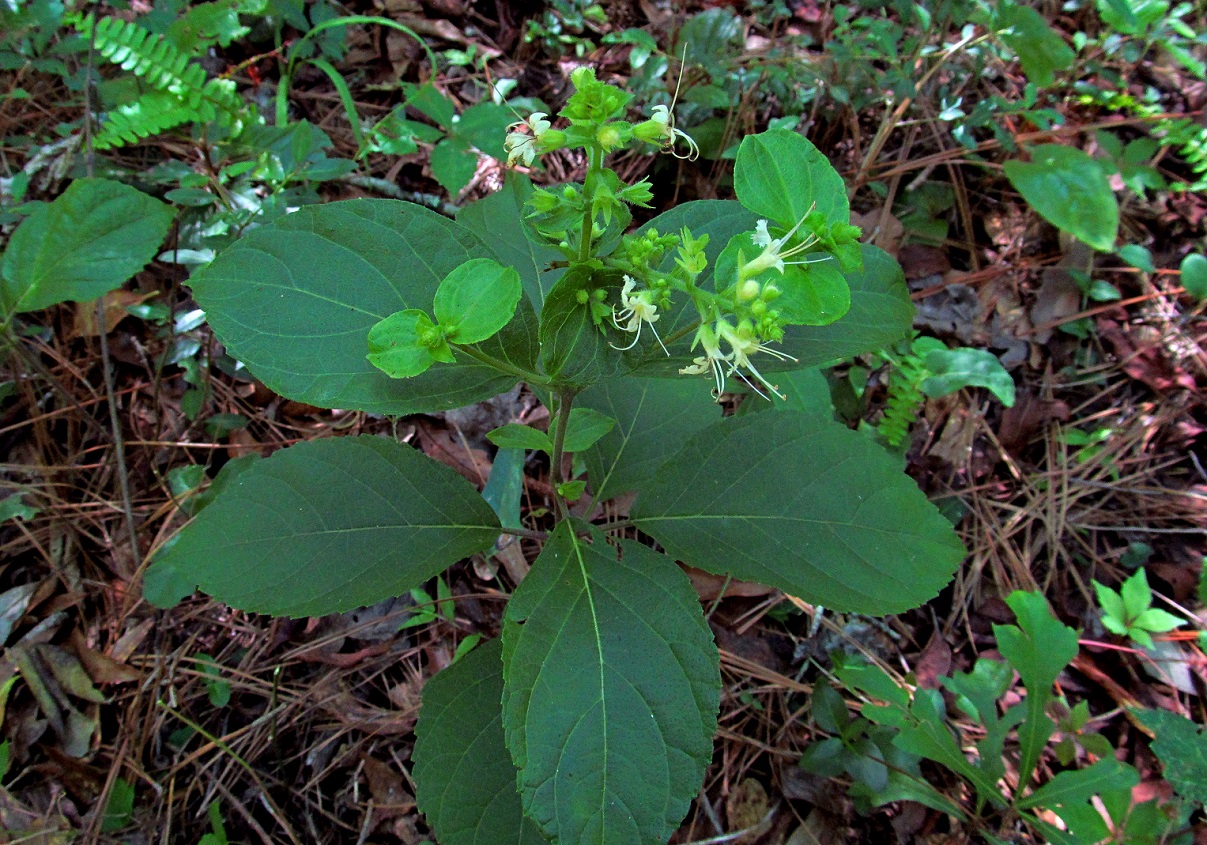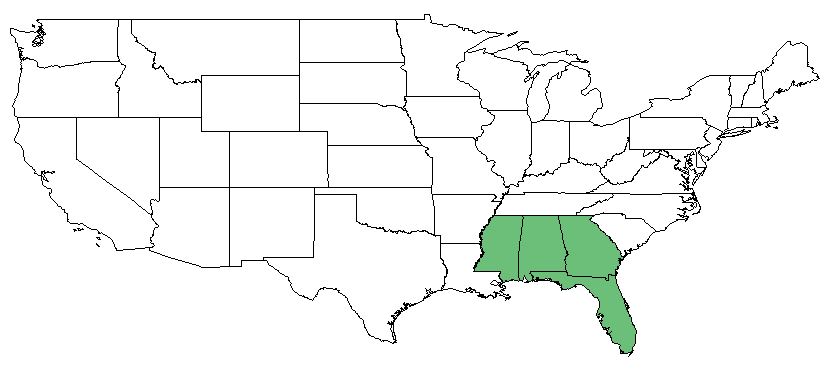Difference between revisions of "Collinsonia anisata"
| Line 37: | Line 37: | ||
===Phenology=== <!--Timing off flowering, fruiting, seed dispersal, and environmental triggers. Cite PanFlora website if appropriate: http://www.gilnelson.com/PanFlora/ --> | ===Phenology=== <!--Timing off flowering, fruiting, seed dispersal, and environmental triggers. Cite PanFlora website if appropriate: http://www.gilnelson.com/PanFlora/ --> | ||
| − | In the southeastern and mid-Atlantic United States, ''C. anisata'' flowers from late July through September and fruits from September through October.<ref name="Weakley 2015"/> | + | In the southeastern and mid-Atlantic United States, ''C. anisata'' flowers from late July through September and fruits from September through October.<ref name="Weakley 2015"/> It has also been observed to flower in October, and in May in the off-season.<ref name= "herbarium"/> |
<!--===Seed dispersal===--> | <!--===Seed dispersal===--> | ||
<!--===Seed bank and germination===--> | <!--===Seed bank and germination===--> | ||
Revision as of 13:17, 15 April 2019
| Collinsonia anisata | |
|---|---|

| |
| Photo by the Altas of Alabama Plants Database | |
| Scientific classification | |
| Kingdom: | Plantae |
| Division: | Magnoliophyta - Flowering plants |
| Class: | Magnoliopsida - Dicots |
| Order: | Lamiales |
| Family: | Lamiaceae |
| Genus: | Collinsonia |
| Species: | C. anista |
| Binomial name | |
| Collinsonia anisata Walter | |

| |
| Natural range of Collinsonia anisata from Weakly [1] | |
Common Names: Southern Horsebalm; Anise Horsebalm[1]
Contents
Taxonomic Notes
Synonyms: Collinsonia serotina Walter; Collinsonia canadensis L. var. punctata (Elliott) A. Gray; Collinsonia punctata Elliott; Micheliella anisata (Sims) Briquet
The taxanomic identification of this species seems highly debated in the literature, making a specific description that differentiates it from other species difficult. Collinsonia anisata is almost identical to Collinsonia punctata except for having a scent of aniseed and the number of stamen (four).[2][3] In a 2006 manuscript, C. anisata is suggested to be distinct species of C. serotina by containing 4 stamen, rather than 2.[4]
Description
A South Carolina specimen from 1806 was described as having erect, lightly hairy stems of 2-3 ft (0.61-0.91 m) high. Leaves are petioled, cordate to ovate, acuminate, crenate-dentate, pale underneath, and covered with pellucid dots. Inflorescence contain compound terminal racemus with simpler axillary ones. Seeds are globular.[2] This species has been observed to have 4 fertile stamens, a strong anise-like aroma, stiffly spreading leaves and branches, and to reach a height of 160 cm tall.[5]
Distribution
This species occurs from central Georgia, southwest to the Florida panhandle, and westward to southern Mississippi.[1][4]
Ecology
Habitat
C. anisata is found in rich forests.[1] It has been observed in a wooded ravine, a bluff along a creek, a wooded patch along a drainage, a shaded mesic woods along river border, an open wooded hillside, and a pine-oak sandhill slope. This species is known to grow on moist loamy sand and sandy loam soils.[5]
Associated species: Pinus palustris, Carya glabra, Quercus falcata, Quercus pumila, Morella cerifera, and Rubus cuneifolius.[5]
Phenology
In the southeastern and mid-Atlantic United States, C. anisata flowers from late July through September and fruits from September through October.[1] It has also been observed to flower in October, and in May in the off-season.[5]
Conservation and Management
Cultivation and restoration
Photo Gallery
References and notes
- ↑ 1.0 1.1 1.2 1.3 1.4 Weakley, Alan S. 2015. Flora of the Southern and Mid-Atlantic States: Working Draft of 21 May 2015. University of North Carolina, Chapel Hill, North Carolina. 1320 pp.
- ↑ 2.0 2.1 Sims J (1809) Collinsonia anisata Curtis's Botanical Magazine 30:t.1213.
- ↑ Ward DB (2014) Thomas Walter typification project, VII: Observations on the genus Collinsonia (Labiatae) and a neotype for C. serotina Walter. Phytoneuron 89:1-5.
- ↑ 4.0 4.1 Peirson JA, Cantino PD, Ballard, Jr. HE (2006) A taxonomic revision of Collinsonia (Lamiaceae) based on phenetic analyses of morphological variation. Systematic Botany 31(2):398-409.
- ↑ 5.0 5.1 5.2 5.3 Florida State University Robert K. Godfrey Herbarium database. URL: http://herbarium.bio.fsu.edu. Last accessed: March 2019. Collectors: Loran C. Anderson, Bob Farley, Floyd Griffith, Edwin Keppner, and William Platt. States and Counties: Florida: Jackson, Leon, and Washington. Georgia: Thomas.